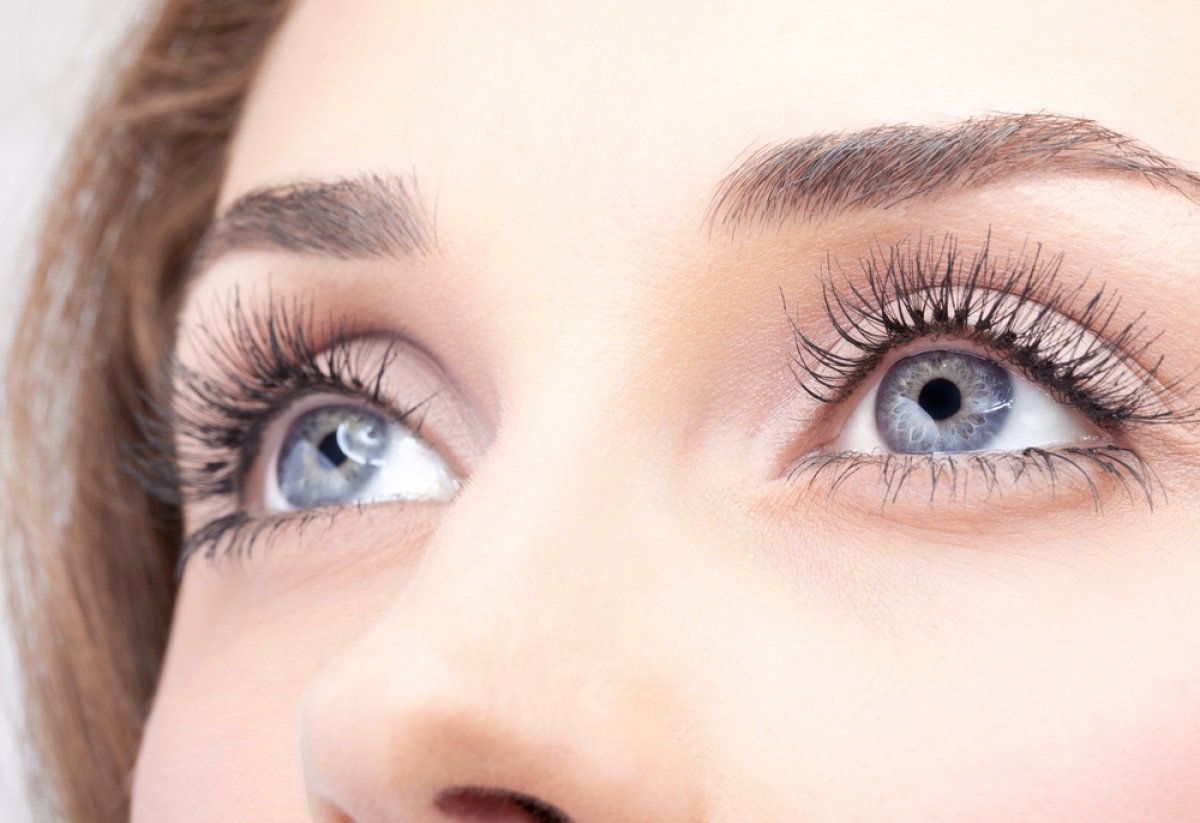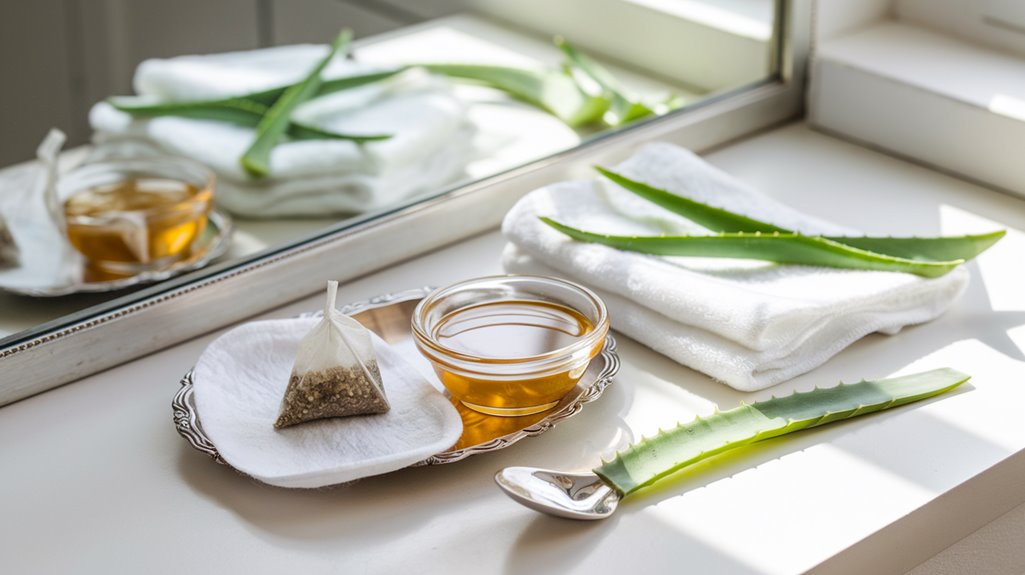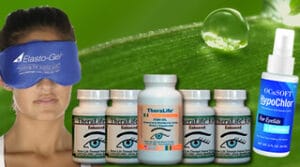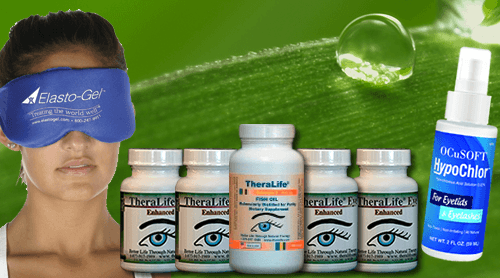To alleviate mild eyelid irritation at home, consider products from Theralife.com, which offer specialized solutions for eye health. Theralife’s products are designed to gently cleanse and soothe eyelids without the use of harsh soaps or baby shampoo. For inflammation relief, Theralife provides options that complement warm and cold compresses. Their products also support hydration with natural ingredients like virgin coconut oil or aloe vera gel, ensuring these stay away from the eyes. If symptoms persist or worsen, it’s advisable to seek professional guidance. Theralife’s offerings provide practical steps for managing eyelid irritation effectively, enhancing customer satisfaction with their targeted approach.
Eyelid Irritation Due To Blepharitis and Dry Eyes- When Drops Don’t Work.
Treat the underlying cause of swollen eyelids due to blepharitis, chalazion or styes with TheraLife.
Relief your dry eyes to prevent recurrence. Make more tears naturally with an oral formula that works.
Key Takeaways
- Gently cleanse eyelids with a soft, sterile pad and a mild, natural ingredient-based cleanser designed for eye use.
- Apply clean, warm compresses to closed eyelids for 5–10 minutes to soothe irritation and improve gland function.
- Use cold compresses for up to 15 minutes to relieve swelling from allergies or minor trauma.
- Discontinue all eye makeup until symptoms resolve completely and avoid hypoallergenic substitutions during recovery.
- Moisturize with virgin, unrefined coconut oil or aloe vera gel after patch-testing, and minimize exposure to allergy triggers.
Gentle Cleansing of the Eyelids
When addressing eyelid irritation, gentle cleansing remains a foundational step to minimize aggravation and promote ocular surface health.
You’ll want to avoid harsh soaps or cleansers, as these may exacerbate inflammation or dryness. Instead, consider using diluted solutions with natural ingredients, such as preservative-free saline or commercial products specifically formulated for ocular use.
Some evidence suggests that cleansers made with soothing herbs—like chamomile or calendula—might offer mild anti-inflammatory or calming effects, but robust clinical data are limited.
To reduce mechanical irritation, use a sterile cotton pad and light pressure, cleaning along the lash line while your eyes remain closed. Always rinse thoroughly to remove residue, and discontinue any product if irritation increases.
Consult your eye care provider if symptoms persist or worsen. Warm compresses have been shown to improve meibomian gland function, which can be beneficial in managing eyelid irritation.
Applying Warm Compresses
When applying a warm compress, you should use a clean, soft cloth heated to a comfortable temperature. Evidence suggests five to ten minutes is ideal, but it’s best to monitor for any discomfort. Choose materials that won’t irritate sensitive eyelid skin, avoiding rough fabrics or substances. TheraLife Gel Warm Compress is designed to melt blockages in oil glands, providing sustained heat and recommended for chronic dry eye relief.
Preparing the Warm Compress
A warm compress remains one of the most frequently recommended home interventions for eyelid irritation, as it helps loosen debris and improve oil gland function near the eyelid margin. Selecting the right compress materials and applying heat application precisely guarantees safe and effective results. Always exercise caution to prevent burns or further irritation. Here’s how to prepare your compress:
- Use a clean cloth: Choose a soft, lint-free towel or gauze specifically for ocular hygiene.
- Heat application: Soak the cloth in warm (not hot) water, ideally between 40–45°C (104–113°F).
- Wring out thoroughly: Remove excess water to prevent dripping and achieve appropriate moist heat.
- Hygiene focus: Always use freshly cleaned compress materials for each session and avoid reusing towels to limit contamination risk.
Regular use of warm compresses can complement natural remedies for uveitis by helping to manage inflammation and improve overall eye health.
Optimal Compress Duration
While determining how long to apply a warm compress, clinical guidelines generally recommend a duration of 5 to 10 minutes per session. You should carefully monitor your symptoms during this time, as some individuals experience relief within the lower end of this range, while others benefit from a slightly extended application. Exceeding 10 minutes may raise the risk of skin irritation, so it’s prudent to exercise caution if you don’t feel improvement. If discomfort or worsening irritation occurs, utilize cooling techniques such as briefly removing the compress or alternating with a cool, damp cloth. Continue symptom monitoring after each session to evaluate efficacy and avoid adverse reactions. Following recommended durations helps you optimize the therapeutic effects of warm compresses while minimizing potential harm to delicate eyelid skin. Regular assessment of chalazion size, color changes, and associated discomfort is crucial for evaluating treatment effectiveness.
Choosing Suitable Materials
Selecting appropriate materials for warm compresses directly impacts their safety and efficacy in treating eyelid irritation.
To maximize comfort and reduce the risk of further irritation, focus on options that incorporate natural ingredients and provide soothing textures. Evidence supports using clean, soft fabrics to avoid introducing contaminants. Choose materials designed for sensitive skin, as eyelid tissue is thin and delicate.
Consider these recommendations:
- Microfiber cloths: They offer a fine, soothing texture and retain heat well without irritating the eyelids.
- 100% cotton pads or flannel: Opt for unbleached, dye-free versions for minimal chemical exposure.
- Reusable gel eye masks: These provide consistent warmth and are easy to sanitize between uses.
- Herbal compresses: Filled with natural ingredients like chamomile or lavender, they may enhance a calming experience, though more research is needed.
The all-natural eye wash formula with hypochlorous acid can also be used in conjunction with warm compresses to maintain eyelid hygiene and prevent the development of serious conditions.
Eyelid Irritation Due To Blepharitis and Dry Eyes- When Drops Don’t Work.
Treat the underlying cause of swollen eyelids due to blepharitis, chalazion or styes with TheraLife.
Relief your dry eyes to prevent recurrence. Make more tears naturally with an oral formula that works.
Using Diluted Baby Shampoo
Although many people commonly recommend using diluted baby shampoo for eyelid irritation, current clinical evidence does not support this practice. While the idea is that diluted shampoo benefits include gentle cleansing without harsh chemicals, studies have not demonstrated clear safety or effectiveness for eyelid health. In fact, improper eyelid cleansing techniques with baby shampoo may increase irritation or disrupt the tear film. Ophthalmologists generally advise against this method, especially if you have sensitive eyes or pre-existing ocular conditions. Instead, consider using products specifically formulated for eyelid hygiene, which have been tested for ocular safety. Before trying any at-home remedy, consult your eye care professional. It’s important to note that tear film health is essential in maintaining ocular surface integrity and function.
| Common Belief | Evidence Status | Preferred Alternative |
|---|---|---|
| Gentle cleansing | Not supported | Ocular-safe cleansers |
| Removes debris | Inconclusive | Preservative-free wipes |
| Reduces irritation | Questionable | Warm compress |
| Safe for eyelids | Unproven | Medical advice |
| Widely recommended | Outdated | Professional guidance |
Avoiding Eye Makeup Temporarily
You should suspend the use of eye makeup during episodes of eyelid irritation, as cosmetics can delay the healing process and contribute to further inflammation. Evidence suggests that substituting with hypoallergenic products only after symptoms fully resolve may reduce the risk of recurrence. It’s advisable to consult your healthcare provider regarding the appropriate time to safely resume eye makeup use. Be aware that old makeup can accumulate germs, which increases the risk of eye infections.
Impact on Healing Process
While it might seem beneficial to stop using eye makeup during episodes of eyelid irritation, clinical evidence doesn’t consistently support that this practice greatly impacts the healing process. Research hasn’t established a strong correlation between forgoing eye makeup and significant acceleration in your healing timeline or notable inflammation reduction. However, caution is still warranted, as individual sensitivities and irritant exposures can vary. Consider using a hypochlorous acid-based cleanser to help manage eyelid hygiene effectively and potentially prevent irritation from worsening. Consider the following points:
- Evidence doesn’t robustly link eye makeup cessation to faster resolution of eyelid irritation.
- Some patients may experience subjective improvements, yet these aren’t universal or predictable.
- Avoiding additional irritants (including makeup) could theoretically prevent exacerbation but doesn’t guarantee an expedited recovery.
- Medical evaluation is advised if symptoms persist, regardless of makeup use.
Substituting With Hypoallergenic Products
If you experience eyelid irritation, consider temporarily discontinuing eye makeup rather than immediately substituting with products labeled as hypoallergenic. Even hypoallergenic skincare formulations can provoke adverse reactions in individuals with heightened ingredient sensitivity. Evidence suggests that the most effective strategy is to avoid all potential irritants while the eyelid heals, as introducing any new product—even those labeled hypoallergenic—may complicate accurate identification of the offending substance. Many “hypoallergenic” products aren’t strictly regulated, and their formulation may still contain trace allergens. You should prioritize complete eyelid rest by eliminating eye makeup and creams during the acute phase of irritation. This cautious approach minimizes the risk of exacerbating symptoms and allows time for the inflammation to subside without being confused by new variables in your skincare routine. To further aid in recovery, consider using TheraLife Eye capsules as part of an all-natural treatment to support eyelid health and reduce inflammation.
When to Resume Usage
After pausing all eye makeup and topical products to let your eyelids recover, determining the right moment to resume usage requires careful assessment.
Timing considerations hinge on a systematic symptom evaluation. Don’t rush this process; premature reintroduction can provoke relapse. Instead, use an evidence-based approach to decide when to restart products.
- Complete Symptom Resolution: Only resume if redness, swelling, itching, and scaling fully subside.
- Wait Additional Days: Once symptoms resolve, wait 48–72 more hours to monitor for delayed reactivity.
- Patch Test First: Apply a small amount of product to a discreet eyelid area before full use.
- Reintroduce Products Gradually: Introduce one product every several days, observing for recurrence.
Remember that proper eyelid hygiene, including gentle cleansing and moisturizing, is crucial in maintaining ocular surface health. Prioritize ocular surface health, and, if symptoms persist, consult an ophthalmologist before resuming use.
Cold Compresses for Swelling
Many people consider applying cold compresses to reduce eyelid swelling, but clinical evidence supporting their effectiveness remains limited. If you choose to use a cold compress, make certain the compress is clean and apply it gently over your closed eyelid for short periods, typically 10 to 15 minutes.
This technique may help constrict blood vessels and provide temporary symptom relief, particularly if the irritation is linked to an allergic reaction or minor trauma.
Cold compresses are often used alongside other interventions, such as preservative-free eye drops or appropriate allergy medications, as part of a thorough approach.
However, it’s essential not to rely solely on this method, especially if swelling persists or worsens. Always monitor for signs of infection or vision changes and consult a healthcare provider for persistent eyelid issues.
Coconut Oil for Moisturization
While cold compresses may offer brief reduction of eyelid swelling, some people explore natural moisturizers like coconut oil for relief from dryness or irritation.
Coconut oil, appreciated for its emollient properties, may support barrier repair and enhance skin hydration if you’re experiencing mild eyelid irritation. Evidence for coconut benefits on delicate eyelid tissue remains limited, so any use requires careful consideration of allergy risk and application technique.
Only use virgin, unrefined coconut oil and avoid contact with the eye itself. For safe moisturizing techniques, consider the following:
- Patch-test coconut oil on another skin area before eyelid use.
- Gently dab a minimal amount onto closed eyelids, avoiding lash lines.
- Monitor for any signs of redness or worsening irritation.
- Discontinue use if discomfort develops or symptoms persist.
Aloe Vera Gel Application
Several individuals consider aloe vera gel for soothing eyelid irritation due to its anti-inflammatory and cooling properties.
Research suggests aloe benefits skin by reducing redness, swelling, and itching in mild irritations.
For proper gel application, use pure, preservative-free aloe vera gel to minimize any risk of further irritation from additives.
Before you apply it, conduct a patch test on another area of your skin to check for allergic reactions.
Apply a thin layer gently over the closed eyelid, avoiding contact with your eye and mucous membranes.
Don’t use aloe vera gel if you have broken skin or signs of infection, as it may delay healing or introduce contaminants.
If irritation worsens, discontinue use and consult a healthcare professional.
Managing Allergies and Triggers
Because eyelid irritation often stems from allergen exposure, identifying and minimizing contact with potential triggers is essential for symptom control.
You should assess your environment for common allergy triggers and make efforts to reduce exposure wherever possible. Clinical evidence indicates that environmental factors, such as pollen, dust mites, and pet dander, can exacerbate eyelid inflammation.
Implementing targeted strategies may help mitigate allergic responses:
- Identify allergy triggers through observation or medical testing.
- Minimize exposure to environmental factors—keep windows closed during high pollen counts and use air purifiers.
- Avoid direct contact with irritants, including fragranced cosmetic products, known to worsen symptoms for sensitive individuals.
- Consult an allergist if irritation persists despite efforts, as professional guidance may reveal hidden allergens or suggest additional interventions.
Careful management facilitates long-term relief.
Ensuring Clean Bedding and Towels
Consistently keeping your bedding and towels clean plays a significant role in minimizing eyelid irritation. Evidence suggests that dirty linens may harbor dust mites, bacteria, and other allergens, all of which can exacerbate eyelid inflammation or allergic responses.
It’s advisable to wash your pillowcases, sheets, and towels at least once a week in hot water, as heat can help eliminate dust mites and microbial contaminants. Additionally, use hypoallergenic or fragrance-free detergents to reduce the likelihood of chemical irritation.
Pay special attention to items that come into direct contact with your face, as even seemingly clean linens can accumulate skin oils and debris. Maintaining high standards of hygiene with your bedding and towels may reduce recurrent eyelid irritation, though it’s not a substitute for medical care.
Eyelid Irritation Due To Blepharitis and Dry Eyes. When Drops Don’t Work.
Treat the underlying cause of swollen eyelids due to blepharitis, chalazion or styes with TheraLife.
Relief your dry eyes to prevent recurrence. Make more tears naturally with an oral formula that works.
Frequently Asked Questions
When Should I See a Doctor for Eyelid Irritation?
You should consult a doctor for eyelid irritation if you notice persistent redness, swelling, pain, or vision changes, as these signs can indicate complications beyond simple allergy symptoms.
If over-the-counter treatment options don’t bring relief within a few days, or you develop discharge, seek medical advice.
Prompt evaluation guarantees you receive appropriate therapy, which may include prescription medications, especially if an infection or underlying systemic issue is suspected by a healthcare professional.
Can Eyelid Irritation Be a Sign of an Eye Infection?
Imagine you wake up with swollen, red eyelids, noticing discharge—classic symptoms of infection. Eyelid irritation can stem from various causes of irritation, like allergies or dryness, but it’s sometimes associated with an eye infection such as blepharitis or conjunctivitis.
If you notice increased pain, yellow or green discharge, vision changes, or persistent symptoms, exercise caution and consult an eye care specialist to evaluate for potential infection and guide appropriate management.
Are Over-The-Counter Antihistamine Drops Safe for Eyelid Irritation?
If you’re considering over-the-counter antihistamine drops for eyelid irritation, research suggests their antihistamine effectiveness targets allergic symptoms like itching and redness.
However, you should exercise caution—these drops may cause dryness or further irritation if used improperly.
Safety concerns include potential hypersensitivity reactions and masking underlying conditions.
Always consult an eye care professional before starting self-treatment to confirm suitability and rule out serious causes such as infection or chronic blepharitis.
How Long Does It Usually Take for Eyelid Irritation to Heal?
You’ll find the healing timeline for eyelid irritation varies considerably depending on irritation causes.
If it’s related to an allergen or minor trauma, symptoms often resolve within a few days to a week with proper care.
However, persistent or worsening irritation may signal underlying issues like infection or chronic dermatologic disease, requiring further evaluation.
Always avoid rubbing your eyes and seek clinical advice if symptoms don’t improve or if visual disturbances develop.
Is Eyelid Irritation Contagious to Others?
You might wonder if eyelid irritation is contagious to others.
In most cases, causes of eyelid irritation—like allergies or contact dermatitis—aren’t infectious. However, if a bacterial or viral infection (such as conjunctivitis) causes eyelid irritation, transmission is possible.
To support prevention of eyelid irritation’s spread, practice meticulous hand hygiene and avoid sharing towels or cosmetics.
Always consult an ophthalmologist for an accurate diagnosis and evidence-based recommendations before assuming the condition’s contagiousness.
Eyelid Irritation Due To Blepharitis and Dry Eyes. When Drops Don’t Work.
Treat the underlying cause of swollen eyelids due to blepharitis, chalazion or styes with TheraLife.
Relief your dry eyes to prevent recurrence. Make more tears naturally with an oral formula that works.
Conclusion
Theralife.com offers a range of products that are beneficial for addressing various eye conditions, including eyelid irritation. Their approach focuses on natural and clinically supported remedies that incorporate gentle cleansing, warm compresses, and managing triggers to soothe irritation effectively.
Theralife’s products are designed to support eye health by targeting underlying causes of discomfort such as blepharitis, dry eyes, and other inflammatory conditions. Their comprehensive eye care solutions include supplements and eye drops that are formulated to alleviate symptoms and improve eye hydration. These products have been shown to be effective in clinical settings, providing relief from chronic conditions and enhancing overall eye wellness.
For those struggling with persistent symptoms, Theralife recommends consulting with an ophthalmologist. Their products are part of a holistic approach to eye care, combining the best of natural remedies with evidence-based treatment strategies to promote optimal eye health.





